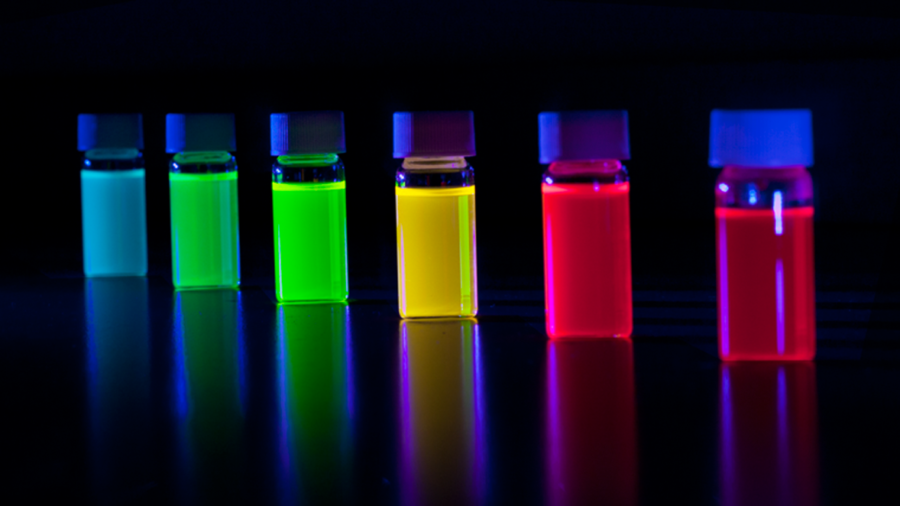Quantum Dots: A Gateway to Rec.2020
Display technologies have progressed in leaps and bounds over the last few decades, but they are still limited in terms of the percentage of colors visible in nature that they can reproduce. By visible light, we mean the region of the electromagnetic spectrum that the average human eye is sensitive to; roughly 380 – 800 nanometres (nm). Visualizing this as a chromaticity diagram is extremely valuable for optoelectronics manufacturers looking to expand the capabilities of any given display technology. However, even leading-edge quantum dot (QD) displays are incapable of recreating this incredibly rich spectrum in its entirety.
This is not a failure of quantum dot technologies. Artificially recreating the full visible spectrum on electronic devices, with perfect hues and saturation, would be an unfathomable technological achievement. Even the most advanced organic light-emitting diode (OLED) panels available today offer less than 45% coverage of the CIE 1976 chromaticity diagram. This corresponds to a maximum of 98% of what is known as the DCI-P3 color space.

Quantum Dots, OLEDs & Color Spaces
DCI-P3 is a color space introduced by Digital Cinema Initiatives (DCI) to specify the range of chromaticities covered by cinema. It is expressed as a portion of the CIE 1976 chromaticity diagram using the red, green and blue (RGB) tristimulus color model, and is the new standard color space for determining the wide color gamut (WCG) capabilities of premium displays. Devices without WCG credentials will struggle to exceed 80% coverage of DCI-P3, while non-WCG displays with less than 4K resolutions are unlikely to reach 75%.
Both OLED and quantum dot technologies offer exceptional coverage of DCI-P3, but the only displays capable of producing over 99% of the space are based on quantum dot-enhanced LED panels. These so-called QLED TVs typically utilize a film of finely-tuned nanocrystals overlaid on a blue backlight, enabling the sharpest possible RGB emission peaks and unmatched color purity. In fact, the chromatic capabilities of quantum dots are so impressive that they are best expressed on the next generation color space: Rec.2020.
If you would like to learn more about the chromatic properties of different display technologies, read our previous blog post: Comparing The Color Gamut of Quantum Dot and OLED Displays
As we mentioned earlier, the progression of display technologies is so rapid that new standards are frequently being adopted. DCI-P3 remains the standard for premium displays today, but the onset of Dolby Cinema theatres with advanced laser-based projectors – the color gamut of which far outstrips the DCI-P3 space – has fuelled interest in Rec.2020 content.
Rec. 2020 defines a color space encompassing a dramatically increased area of coverage of the CIE 1976 chromaticity diagram, predominantly in the green primary region. With the human eye most sensitive to wavelengths in the green region of the visible spectrum, the result is a greatly enriched array of perceptible colours in such displays. This is one of the chief factors underlying the success of quantum dots in greater-than DCI-P3 coverage.
Quantum dots based on cesium lead halide chemistries have shown full width half maximum (FWHM) signals of less than 25 nm corresponding to emission wavelengths of 530 nm. This is the purest green primary currently achievable, suggesting that quantum dots truly are the gateway to the wide coverage of Rec.2020 in next-generation consumer displays.

Quantum Dots from Avantama
Avantama is an industry leader in the synthesis of perovskite quantum dots based on novel chemical arrangements. Learn all about the principles of quantum dot engineering in our comprehensive guide to quantum dots, in which, we discuss all things QD including the importance of particle size, quantum yields, and more. Or, simply contact a member of the Avantama team if you have any questions about engineering WCG display technologies using leading-edge quantum dots.